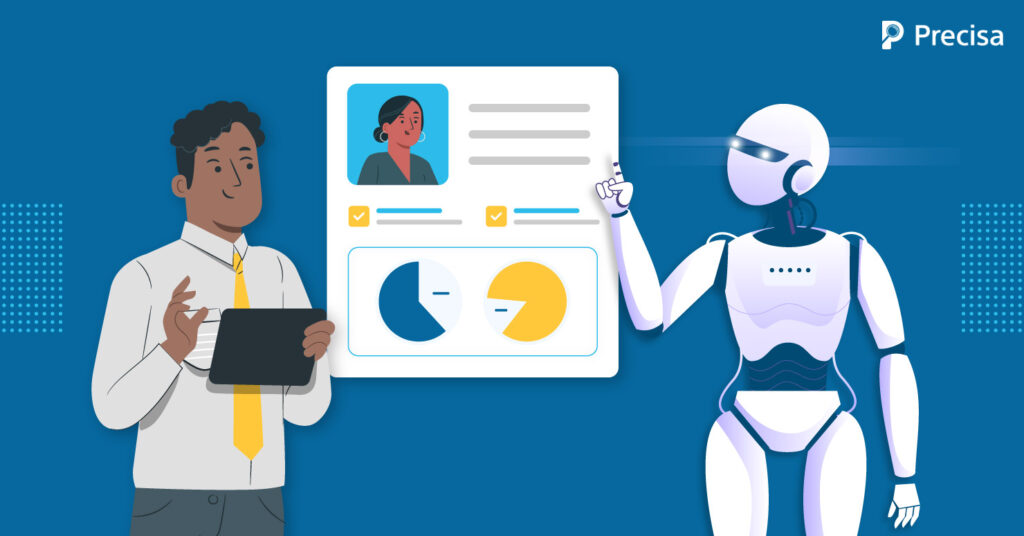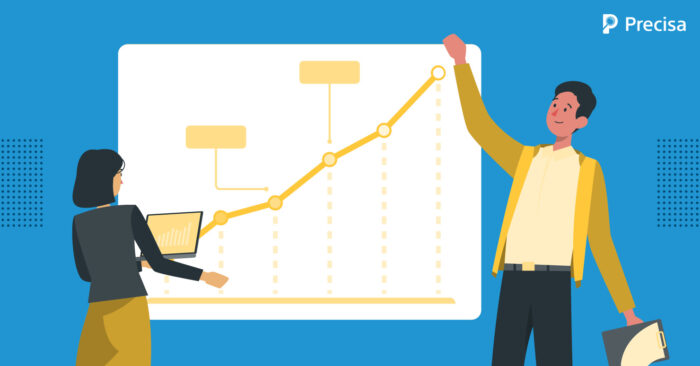Automating Credit Decisions: Can AI Replace Credit Officers?

Credit decision-making involves assessing a borrower’s repayment capacity and creditworthiness before approving a loan. It is a critical function for lenders as it helps them decide whether to extend credit to an applicant or not and helps them minimise their risk.
However, businesses often face challenges in credit decision-making owing to its complexity, which involves assessing multiple aspects, like the borrower’s credit history, income and debt levels, and more.
Advances in analytics and modelling are making credit risk analysis more efficient and precise. Businesses can now use Artificial Intelligence (AI) and Machine Learning (ML) to automate the credit decision-making process, which helps analyse various variables and identify patterns that may be difficult to recognise manually.
As per an EY global survey conducted in 2020, 85% of all respondents used some form of AI application to boost speed and efficiency in the financial services sector.
As AI becomes pervasive in credit decision analysis, will it replace credit officers? The following discussion explores this prospect.
How Automating Credit Decisions Helps Lenders?
Automation and AI are changing the entire lending landscape. Automating credit analysis helps overcome numerous challenges and offers many advantages, a few of which we discuss below.
1. Improved Accuracy
AI-powered credit decision models help reduce the risk for lenders by providing more accurate inputs than traditional models. These models use a broader range of data points for their analysis, including alternative data sources, offering a more multi-dimensional view.
Improved accuracy in credit decision-making and filtering customers at the inception stage helps lenders reduce default risks.
2. Promotes Financial Inclusion
Machine learning models that leverage AI help make credit accessible to people who are generally left out of traditional banking channels. Using alternative data sources helps lenders assess applicants who may not have a conventional credit history but may be qualified and eligible for a loan. Using AI models helps the lender expand their customer base along with promoting financial inclusion.
3. Customer Onboarding Is Faster
Automating credit decisions helps speed up customer onboarding with a streamlined credit evaluation approach. Automation eliminates the need to enter and process data manually; it also accelerates extracting the required data from financial statements, application forms and other sources.
The bank statement analyser from Precisa helps extract data from bank statements, categorises and analyses the information and helps reduce the processing time by 5 times.
Automated processes also help identify missing information and follow up with the applicants to provide the missing data.
4. Boosts Revenue
Automated credit decisioning helps increase revenues for the lender by lowering the cost of acquisition, increasing acceptance rates and enhancing customer experience.
A study by McKinsey revealed that AI-based credit appraisal helps lenders reduce the cost of loan origination by up to 40%.
Automating credit decisions reduces the turnaround time, which helps lenders process more applications without compromising the quality of the portfolio.
Will AI Replace Credit Officers?
The above discussion highlights how AI offers many advantages and strengthens the credit risk assessment of applicants.
In this scenario, a question often asked across all fields wherever AI is employed is, will it replace humans? Is it possible that all credit decisions are taken automatically with no requirement of credit officers?
Let us explore why, despite the many advantages artificial intelligence offers, the role of credit officers remains invaluable in the credit risk analysis process.
1. AI Cannot Replace Human Judgement
AI models can make accurate predictions based only on available data. However, these models cannot imagine the future with more nuance or respond to subtly changing conditions.
AI excels in quantitative analysis; however, grasping the non-quantitative elements essential for in-depth research may be beyond its domain. In contrast, when credit officers interact with potential clients, they can make many assessments and observations based on their interactions. This can help them get a more holistic view of the applicant’s character and other aspects beyond numbers.
2. AI Models Can Be Biased
AI models are as good as the data used to train them. If the data provided is biased, the model will also be biased.
Recently, Forbes also highlighted this issue, the possibility of AI introducing biases that could lead to discrimination or unfair behaviour, leading to credit decision models that may discriminate against a specific section of borrowers.
Combining human intelligence and experience with AI is crucial to mitigate this problem. Rather than AI being solely responsible for decision-making, it is a valuable tool that aids decision-making. Credit officers can help reduce these biases by reevaluating credit decisions made by artificial intelligence.
3. Regulatory Requirements
The financial sector has to comply with several regulatory guidelines laid down by authorities like the Reserve Bank of India and the Securities and Exchange Board of India.
Credit officers also have to comply with several guidelines laid down by these authorities, which require human oversight and intervention that AI cannot yet accomplish.
4. AI Models Lack Transparency
AI credit risk models need more transparency, making it easier to understand the decision-making mechanisms. An applicant whose loan application is rejected may want to know the cause for refusal. The reason may not be apparent if the credit appraisal process is automated, and the applicant may not get a suitable explanation.
When credit officers reject a loan application, they can explain the cause to the applicant. The customer has the option to address the issue and get a loan approved once the concern is taken care of.
Lack of transparency also makes it tricky to address the biases in the model and remove them.
The Takeaway
Credit officers may find it challenging to keep up with the deluge of information available for decision-making, and it may be time-consuming too.
The AI credit assessment models assist credit officers and augment the ability and accuracy of decision-making but cannot replace human intelligence, which is authentic intelligence.
The combination of human intelligence and AI can help lenders reduce their risk and make better credit decisions, apart from making the process faster and more customer-friendly.
Precisa’s Bank Statement Analyser is just the right tool that comes with the power and benefits of AI and can provide credit officers with valuable insights for credit risk analysis.
Sign up today for a free demo.




